K-pop or Korea-Pop, the worldwide phenomenon that has risen to proficiency in the last 10 years becoming a powerhouse in the music industry on a worldwide scale; has a major problem.
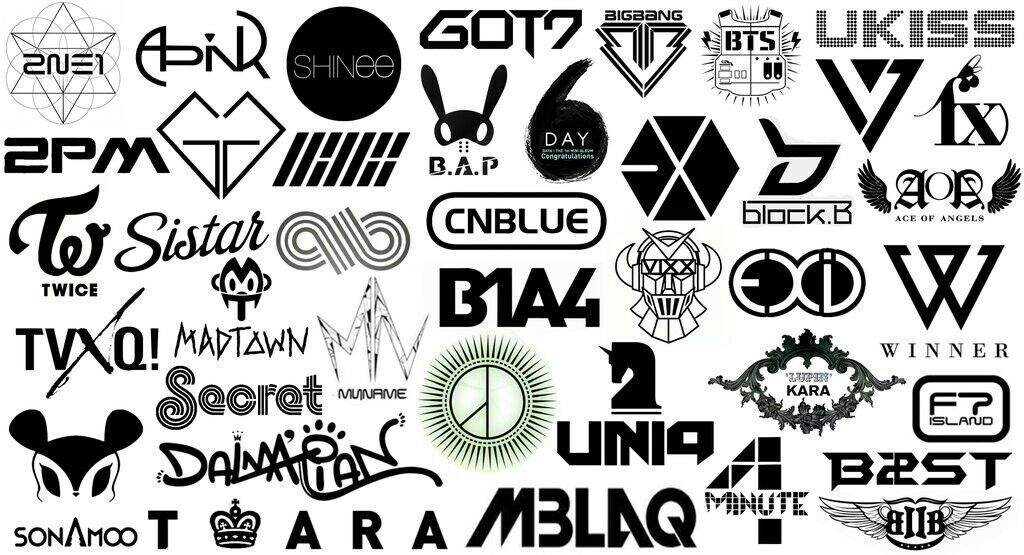
With the rise of artists like BTS and BLACKPINK, smashing chart records and selling out stadiums around the world, this success is blinding fans to the dark pattern that is emerging in the K-pop scene. In the past 10 years over 15 artists have committed suicide, with most of them being under the age of 30, the question is why are these young artists killing themselves? And what is happening in Korea for this to be so common?
On November 24th 2019 at 6:09pm K-pop star and actress Goo Hara is found dead in her home in Seoul, she had taken her own life. The 28-year-old was a member of the popular K-pop group ‘Kara’ which disbanded in 2016, but she went on to have a successful acting and solo career, up until her untimely passing.

This comes six months after a supposed suicide attempt where Goo said in an official statement that she was “in agony over overlapping issues” and was “vowing to recover”. Her obvious call for help was met with her record label pushing out a new single and announcing a tour across major cities in Japan to create the façade that she was on the road to recovery.
These issues were front and center of the young artist’s life and she had become a target by internet trolls after she took her former boyfriend Choi Jong-Bum to court. He was convicted of assault and threatening to circulate a sex tape of the two that was filmed without Goo’s consent. Although the court ruling in Goo’s favour, they did not recognise that the tape was filmed without consent, a common occurrence in Korea, where women’s rights are still undervalued.
Her last words came from her Instagram where she wrote simply; “Goodnight”. Goo became another name on the ever-growing list of industry members to take their lives, the question is why is this happening?
The K-Pop Industry
In the late 90’s, South Korea had become one of the poorest countries in the world due to the Asian financial crisis. As a result, Korean leaders decided to use music to improve the country’s image and build its cultural influence leading to the creation of the Ministry of Culture, which housed a specific department devoted entirely to K-Pop.
Euny Hong author of The Birth of Korean Cool summarises the government’s treatment of K-Pop perfectly when she spoke to NPR saying:
“It turns out that the Korean government treats its K-pop industry the way that the American government treats its automobile and banking industry, meaning that these are industries that have to be protected.”
This includes building multi-million-dollar concert halls and auditoriums, working towards greater hologram technology, and regulating noeraebangs or Korean Karaoke bars to fuel the K-pop machine.
In 2018 Korea’s cultural exports inclusive of K-Pop earned $9.4 Billion US and is estimated to deliver a five-times return on investment. The Government has poured millions into the success of K-Pop sometimes forgoing other culture exports like fashion or food.
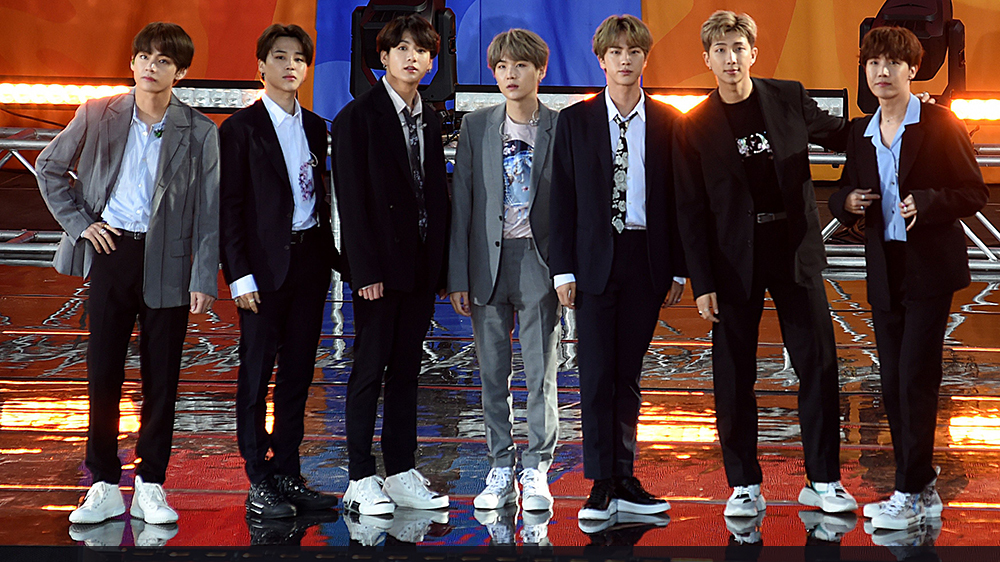
With so much money involved the pressure for these entertainment companies to succeed is higher than ever and in turn that pressure is placed on these artists. Many stars aren’t from wealthy families, so the prospect of attending one of the countries’ distinguished universities is out of reach, and K-pop provides another avenue for success. Industry managers offer ‘slave contracts’ where participants are offered very little money until later on in their career for the promise of stardom. This cycle will rinse and repeat as K-pop business will continue to pluck naive teenagers from low social-economic environments and create a new wave of artists almost endlessly, twisting and transforming them to meet the mold that’s work for decades.
An intense regime begins where participants have to undergo intense dance and voice training, language studies and sometimes plastic surgery, most popularly the shaving of bone from their jaw to create a ‘V’ shape to fit the K-Pop standard. Everyone is made to fit a certain mould of what has made the industry so prevalent.
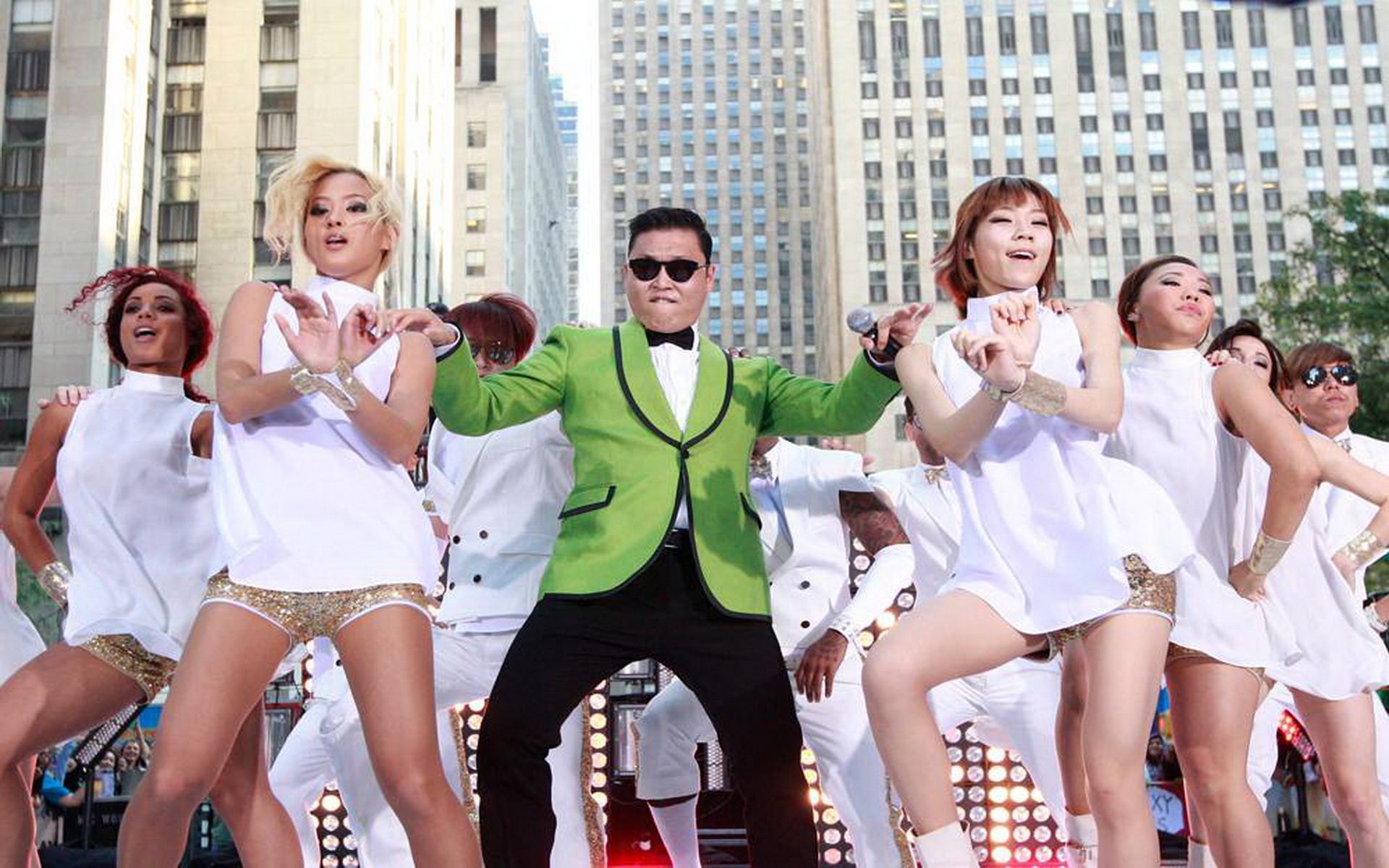
These contracts control every aspect of their lives including their relationships. These stars aren’t known as artists they’re ‘idols’ and are expected to create an intense relationship with fans. K-Pop stars show kinship with fans, singing about them in their songs, making public appearances almost daily and are forced to have a constant social media presence.
Associate professor of Korean Studies at the University of Western Australia Dr Joanna Elfving-Hwang has studied K-Pop and the way it intersects with Korean culture for nearly 20 years. On the topic of Fan and Popstars relationships, she states, when speaking with the ABC “That’s how K-Pop works. As an idol, you need these core fans to ensure your celebrity status. They decide whether a company drops you or not. You have to share your life with them on social media and cultivate that online relationship.”
K-Pop fans are some of the most loyal of any in the world thanks to that connection with their idol, so much so that when their idol commits suicide, a ripple effect is expected.
A paper published by Fu, King-Wa in his book ‘A study of the Impact of Thirteen Suicides on Subsequent Suicide Rates in South Korea from 2005 to 2009’ cites that three out of every eleven cases of celebrity suicide resulted in a higher suicide rate in the population.
There is no escape for these idols, they have to always be online always be available to keep fans interested and engaged. Long hours of training, rehearsing and maintaining social media presence is draining on the artists, especially since they are never given a moment to enjoy the reality of being themselves.
No greater example is the K-Pop star Sulli, who took her own life one month prior to Goo Hara. Sulli had a very public battle with internet toxicity. Unlike Goo, Sulli was very outspoken about not only the K-pop industry but tried to break the taboos that have been created for women in Korea. In a recent TV appearance, she said “When I met people in the past, even before saying hello, I felt I should explain myself: This isn’t who I am!’.
Sulli tried for separation of stage personality from reality but the preconceived notions of what a K-pop star is meant to be was too unauthentic for her.
“My life is actually empty, so I feel like I’m lying to everyone by pretending to be happy on the outside,” she said in June on a TV show that asks guests to read out the words of their online trolls.
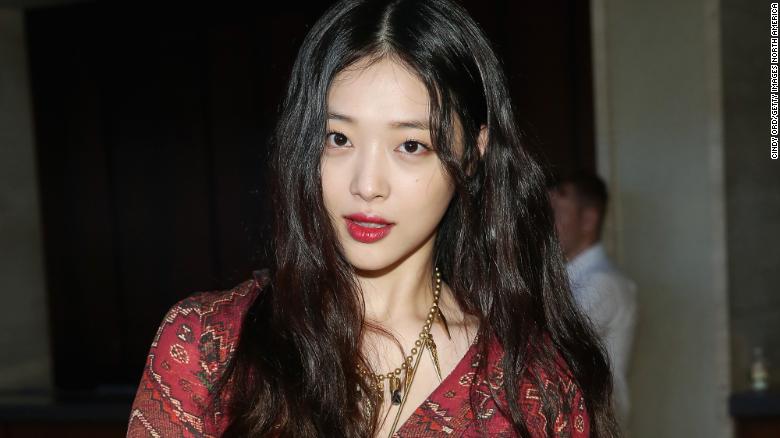
Sulli came under fire when she posted braless pictures of herself on Instagram saying “When I first posted pictures of me braless, there were so many different reactions. I could have been frightened and hide, but I didn’t. I wanted people’s prejudices to disappear”.
Fans had already shown disdain for Sulli seeing her solo album as a betrayal of her group f(x); not to mention photos of her that appeared online holding hands with her then-boyfriend which violated South Korea’s notions of public modesty not to mention her contract.
Sulli tried to make a change in the community, be a voice for women but as Dr Joanna Elfving-Hwang summaries “Feminism is not hip in Korea and she got done badly. She got a lot of hate.” The online bullying became all too much, leading to her tragic death.
The Perception of Mental Health in Korea
According to the Organisation for Economic Co-operation and Development (OECD), South Korea has the highest suicide rate in the world. For every 100-thousand South Koreans, 24.6% are likely to commit suicide, and as little as 1 in 10 people will seek professional help. Mental health is not properly treated in South Korea, its swept under the rug seen as weak or illegitimate, so it is so obvious to see why so many K-pop stars are taking their lives.
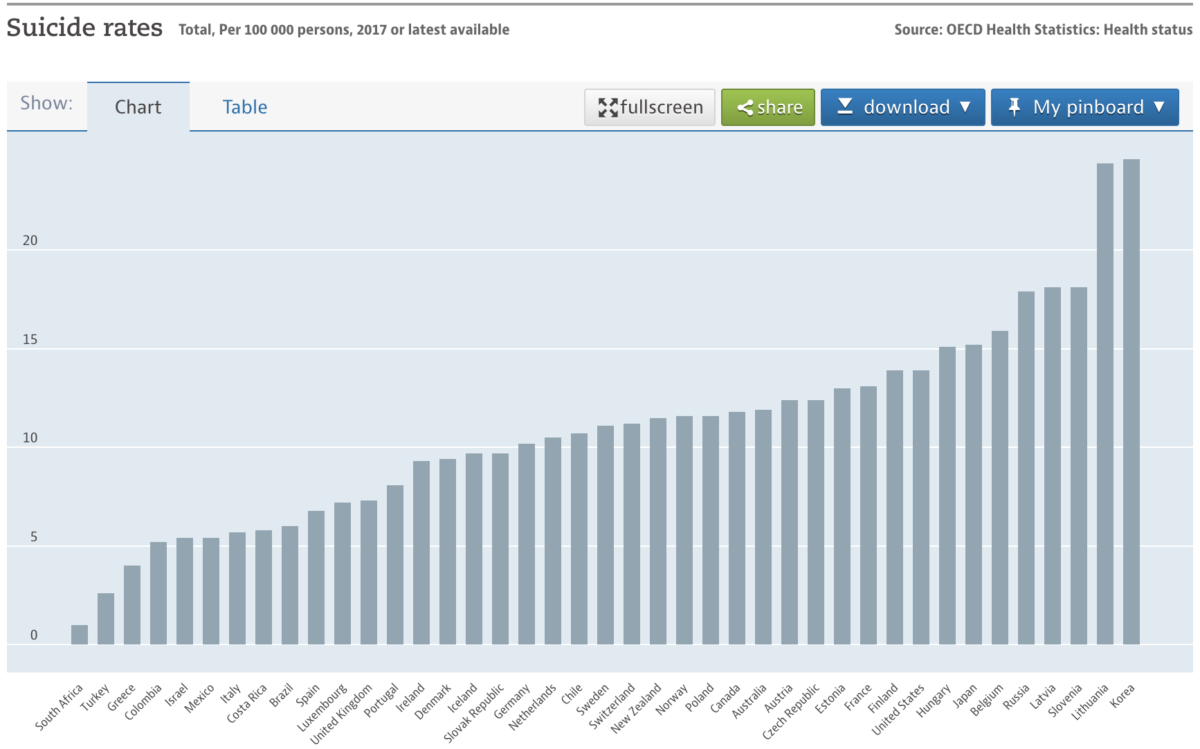
A lot of these stigmas can be dated back to old-world values, where Buddhism placed importance on modesty and prioritising value. Personal concerns don’t contribute to the family unit only hinder it so they are locked away or dismissed. “Talking openly about emotional problems is still taboo,” said Dr. Kim Hyong-soo, a psychologist and professor at Chosun University in Kwangju when speaking with the Borgen Project.
South Koreans are stressed and depressed at an alarming rate harking back to older times when they would be expected to just bear it, if not you will not find ‘success’ in the high stakes, high pressure and high competitiveness landscape of South Korea.
The Journal of the Royal Society of Medicine reports that “Suicide appears a more common coping mechanism in Asian cultures, who uphold the concept of ‘saving face’ instead of continuing life with little self-esteem, a mentality reminiscent of the hara-kiri culture.”
In South Korean the status quo is the norm, any admission of suffering from a mental health issue can make not only yourself look weak, but your family too. This opens you up to scrutiny by society due to South Korean stigmas can make you look weak.
This may be why so many K-Pop stars hide their emotions until it’s too late. They are idols, someone, to be adored and aspired to, an admission of suffering from mental health issues dispels their image to not only the Korean market but the world. Kim Byung-soo a psychiatrist at Asian Medical Center in Korea, has cared for several stars at his practice and touched on this idea when speaking with the Korean Herald.
“Their [K-pop Stars] hesitance in visiting mental clinics is mostly due to fear of being recognized. While some major K-pop agencies supposedly have in-house counselors, some idols are better at hiding their mental illness and it would remain unidentified,” Byung-soo said.
In 2017 Kim Jong-hyun member of the K-pop group SHINee died in hospital after poisoning himself in a hotel room in Seoul. He had succumbed to his depression and took his own life at the age of 27. His suicide note detailed that he was “Broken from inside. The depression that gnawed on me slowly has finally engulfed me entirely”. Kim went on to make reference to his doctor who, when he was approached for help dealing with depression, blamed Kim’s personality not being strong enough to shake it off.
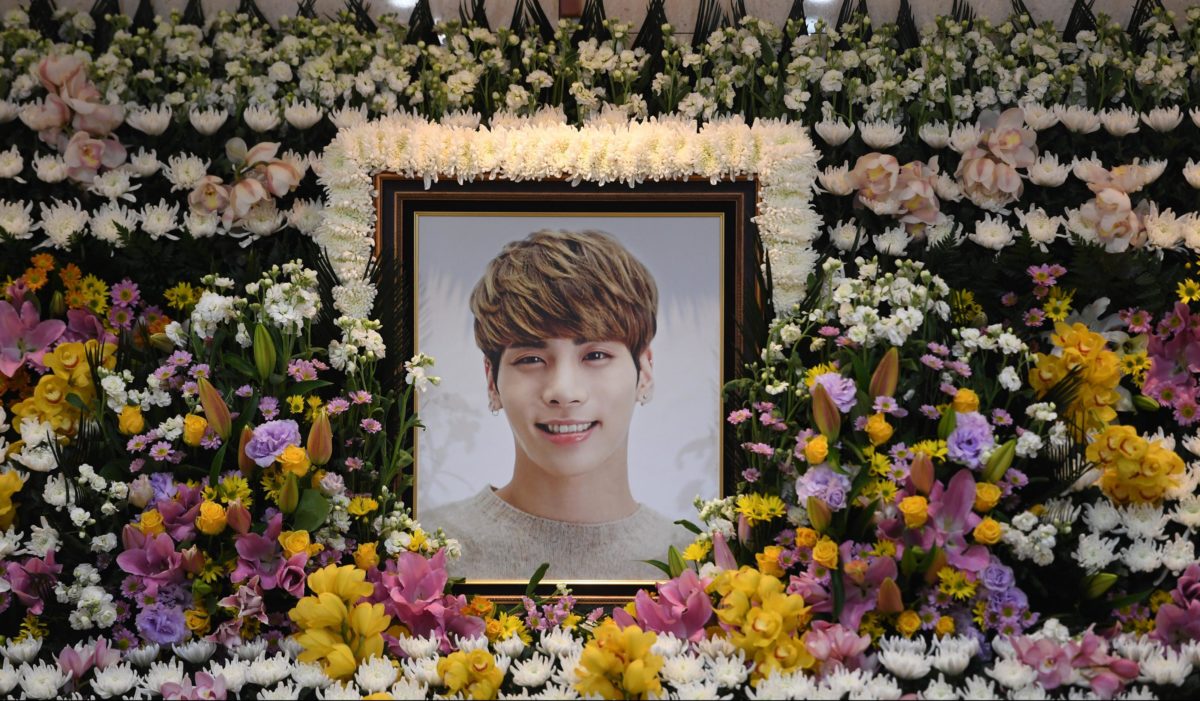
Korea has state-funded mental health services, mostly only accessible through hospital facilities but the sector is incredibly underfunded. Those who do use the service pay out of pocket and use cash to avoid stigmas as these treatments would show up on one’s insurance record. With stigma constantly surrounding the circumstances in which citizens live, its no wonder that an overworked artist would feel as if they have nowhere to turn.
South Korea has full involvement with the Strategies to Prevent Suicide (STOPS) project in Asia, that according to Who international works to “develop and undertake high-priority projects that are likely to make a difference.” The main goal is to create public awareness and look for the signs that may lead to suicide, mostly through posters and pamphlets. This method is still yet to be measured on its effectiveness in the country. The Education ministry created a smartphone app that checks student’s data to see if they are searching for words related to suicide. This method seems to have a minimal effect when looking at the current statistics of the country.
For nearly all the artists who have committed suicide, it seems to be the same story, the pressure to succeed. If it’s for their family, their label, their fans or even the country, the ridiculously measures that they are expected to go to create a false narrative, to have no escape or opportunity for the normalities of life is heart-breaking. With no one to turn to, services that are lackluster and attitudes that are outdated, the sad reality is that we will see another tragedy occur like that of Goo Hara.
If you or anyone you know needs to help, Fashion Industry Broadcast encourages you to contact these organisations:
- Lifeline on 13 11 14
- Kids Helpline on 1800 551 800
- MensLine Australia on 1300 789 978
- Suicide Call Back Service on 1300 659 467
- Beyond Blue on 1300 22 46 36
- Headspace on 1800 650 890
- ReachOut at au.reachout.com
Subscribe to FIB’s newsletter for your weekly dose of music, fashion and pop culture news!






